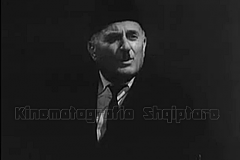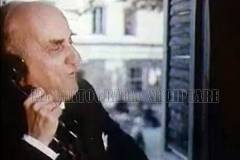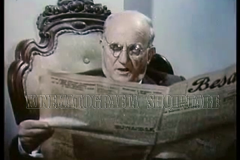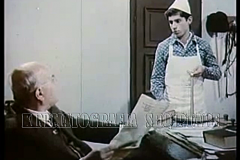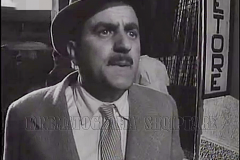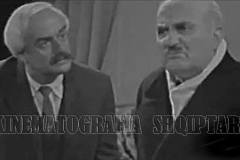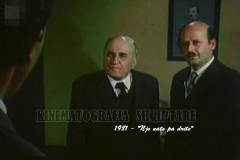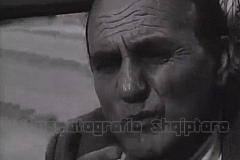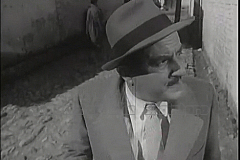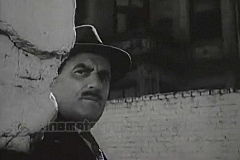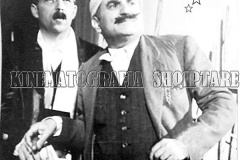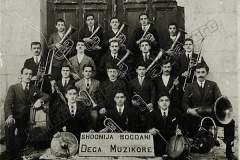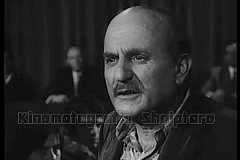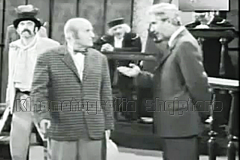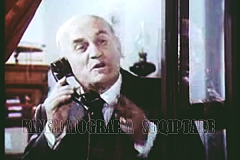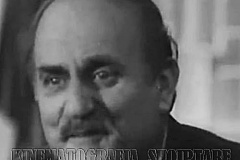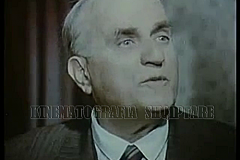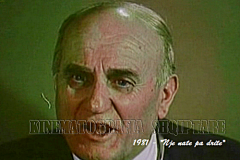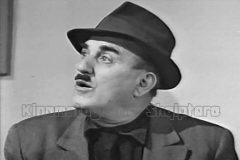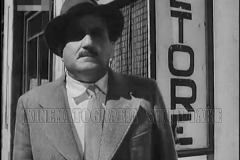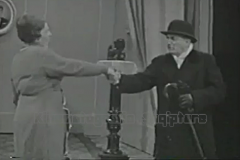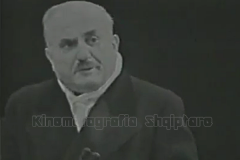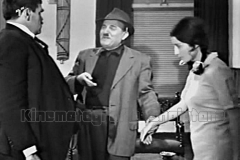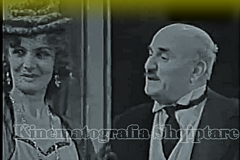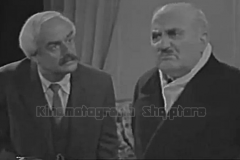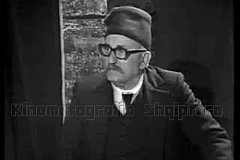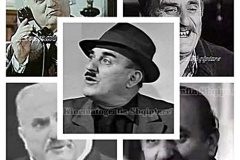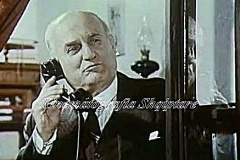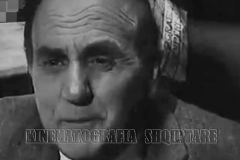Gjon Karma (1915-1994)
Merited artist.
Actor of the founding generation of the theatrical genre.
Gjon Karma belongs to the generation that founded the “People’s Theater” (today the National Theater).
Born in Shkoder, on March 18, 1915. Around the year 1932, he started his artistic activity with the company “Bogdani”, from the bosom of this troupe came the future artists of the Albanian theater, Loro Kovaçi, Pjetër Gjoka. In addition to “Bogdan” it is also active with other companies such as “Rozafa” or “Vllaznia”;
During its 17 years of activity, the theater branch of the “Bogdani” society gave about 55 theater pieces. He appeared on the stage for the first time in 1934, in the interpretation of the role of Nush Lezeti, a character that left a mark on the Shkodran public of the time, affirming the emergence of a talented young actor.
He was 30 years old when, in 1945, Gjon Karma became an actor at the “People’s Theater” (Teatri Popullor), who performed over 100 roles during his artistic career, being particularly successful in building comic and sarcastic characters.
Karma, master of character roles. He was cut out for small roles, and has been described as “the great actor of small roles”. Day weaves irony and satire with hilarity, the light element of humor and the grotesque, tending in its own way towards realistic portrayals and true to life. These qualities of his are noticed in the first role, with Pjetrushi in the comedy “Gjido” in v. 1945.
Later the actor gained a dimension with the other role of Man Kukaleshi in the well-known comedy “The Prefect” by B. Levonja (1946). He imagines the figure of the corrupt, deceitful and servile official. Besides acting in the “People’s Theatre”, he also writes some comedies and stage plays, where we can mention “Qypi me flori”.
Another successful role of his was that of Prefect Veipi in the comedy of S. Comoros “Carnavals of Korce” in 1964, a role with which he further consolidate special talent as an actor with a sarcastic tendency to draw the unique features of the characters with elegance and truth.
Gjon Karma also masterfully played the role of Zeqo in the drama “Second Face / Fytytra e dyte” by Dritero Agolli. In 1971, he played the merchant in the drama “Arturo Ui” by B. Brecht.
Some of the other roles performed at the People’s Theater are: Babčinskij “The Auditor”, Orgoni “Tartufi”, Vurko “After Death”, Polloni “Hamlet”, Falstaff “The Merry Wives of Windsor”, Asllan Bey in “Halili and Hajria”; Gjergj Bardhi in “Our Land / Toka e jone”; Kola in “Cuca e maleve”; Veipi in “Three days of doomsday” etc.
He has also successfully performed several roles in cinema. The first role will be that of a spy, Jorgo, in 1951 in “Debatik”. Later, other roles will follow, such as in “Our Land / Toka e jone” (1964), “Why is this drum beating / Perse bie kjo daulle” (1969), “Conscience” (1972), etc.
Among these characters in the film, we can mention that of the prefect in ” Concert in the year 36″.
The legend Gjon Karma became well-known in the numerous interpretations in the humorous show “Hilarious Hour / Ora gazmore” of Radio Tirana, as well as in the numerous broadcasts for children and adults. In addition to acting in other interpretations, one of the merits of his work has been the research, systematization, and publication of data on the history of the theater movement in Albania, especially in the city of Shkodra and that of the People’s Theater (TK), becoming a from the bearers, founders and enrichers of the Archive of the National Corporal.
Karma have been working for about 15 years in this position.
He retired in 1976. Karma has received several awards and orders.
Gjon Karma passed away on January 13, 1994
Filmography:
* Debatik – (1961)… Jorgo
* Our land – (1964)…..
* Why this drum beats – (1969)
* Consciousness – (1972)… Uncle Veliu
* Girls with red ribbons – (1978)
* When the foundations were laid – (1978)
* Concert in year `36 – (1978)…Mayor
* Small unit / “Ceta e vogel” – (1979)…Tibil Kuka
* A night without light – (1981)
* The end of a feud – (1983) …..Seit Beci
* The decision (1984)… Miço Falli
* The Uninvited (1985)
* A boy and a girl – (1990)
Published for the first time since March 2013 and revised in the following years
________________________
Albanian Cinematography in acitivty since 2013
Reference: “60 years of the National Theater (F. Slatina) page: 29 “Encyclopedia, theater and Albanian Cinematography” – Toena 2009 (J. Papagjoni) page: 213; “Encyclopedia of Albanian Cinematography” – Toena 2002 (AT Hoxha) page 186.
Follow us: Blog: https://albaniancinematography.blogspot.com/ Facebook: https://www.facebook.com/ksh.faqjazyrtare Dailymotion: https://www.dailymotion.com/kinetografiashqiptareartisporti YouTube: https://www.youtube.com/channel/UCDRYQ5xCyGkfELm3mX8Rhtw
Discover more from Albanian Cinematography - Sport
Subscribe to get the latest posts sent to your email.

